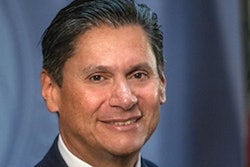After the U.S. Supreme Court eliminated race-conscious admissions policies at the end of June, colleges and universities began preparing for the inevitable blow to their on-campus diversity. So, a press release last week from the University of California (UC) system may have felt like a ray of hope. UC announced that it had admitted its largest-ever freshman class of underrepresented minorities, almost 39,000 students. These students make up 44% of admitted freshmen, the highest percentage ever. This, in a state where affirmative action has been verboten since 1998. Had the UC system figured out the secret to maintaining diversity without using racial admissions preferences? Not quite. But the numbers were still a positive sign, according to experts.
 The admissions office at the University of California, Los Angeles
The admissions office at the University of California, Los Angeles
“The University’s latest admissions data reflects our commitment to expanding opportunity and to ensuring that students of all backgrounds have a chance to attend one of our excellent undergraduate campuses,” said Dr. Michael V. Drake, president of the UC system, in the press release.
When asked what factors allowed UC to achieve these gains, Han Mi Yoon-Wu, executive director of undergraduate admissions at the UC Office of the President, cited strong funding from the state legislature. She also referenced the system’s recruitment and pipeline efforts.
“The University engages with high schools and California Community Colleges throughout the state to align readiness standards and improve the percentage of students who are eligible for admission to UC and CSU campuses,” she said in an email. “The university has also made large investments in our financial aid program to ensure access and affordability of a UC education.”
However, although more underrepresented students than ever have been accepted, a closer look at the accompanying statistics released by UC reveals a more ambiguous picture of progress.
Though the raw numbers of underrepresented students are higher, their share of the student body is similar to what it has been in recent years. This suggests that changes in the number of underrepresented students are the product of UC admitting over 4,000 more students this year than in 2022, rather than anything specific that UC is doing to admit more minorities.















